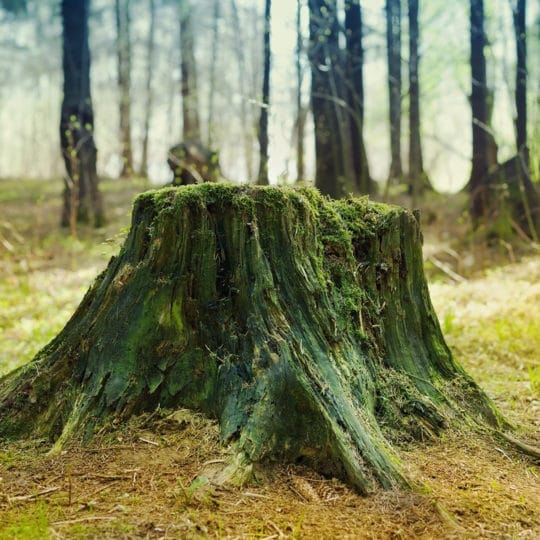Tree Stumps 101
Pros, Cons, Uses & Removal
Posted
June 20, 2019

Tree stumps. It’s what’s left after cutting down a tree, and it can be a blessing or curse to your yard. Learn about the pros, cons, uses, and removal process in the following quick rundown.
Pros of Tree Stumps
There are benefits of having tree stumps, especially if you want the tree to grow back. Since many trees have to be cut for damage or disease, there is a chance it can grow back healthier from an existing stump. If the roots are still firmly planted under the stump, regeneration is a possibility. Some deciduous trees will resprout in multiple spots around the edge of a stump. This could be good news for wooded areas.
Uses for Tree Stumps
If you don’t want to get rid of a tree stump—whether for personal or financial reasons—you can also make use for it in your yard or garden. Level the top of the stump to create the perfect outdoor seat or tabletop. Cut off layers to create round discs for pathways or garden decor. Hollow out the center for the perfect natural planter. Creativity can turn any stump into a work of art.
Tree Stump Cons
If you don’t want a new tree to regenerate from a stump, it’s best you remove it altogether. Stumps also create obstacles and hazards around your yard, and could become a spot for more plant disease and decay to grow.
Stump Removal
Tree stumps can be difficult to remove, especially if its from a large tree. Small stumps are easier to dig out, but a larger one should be shredded with a stump grinder or burnt. There are also chemical products that help break down a stump to make it easier to remove. Depending on your budget, you can have stump removal added to a tree removal project, or simply call in the professionals to remove any existing stump.

Download Your FREE Tree Planting Guide
Planting a tree is a cinch, as long as you are properly prepared. Get prepped to plant one tree or 100 with our straightforward guide.